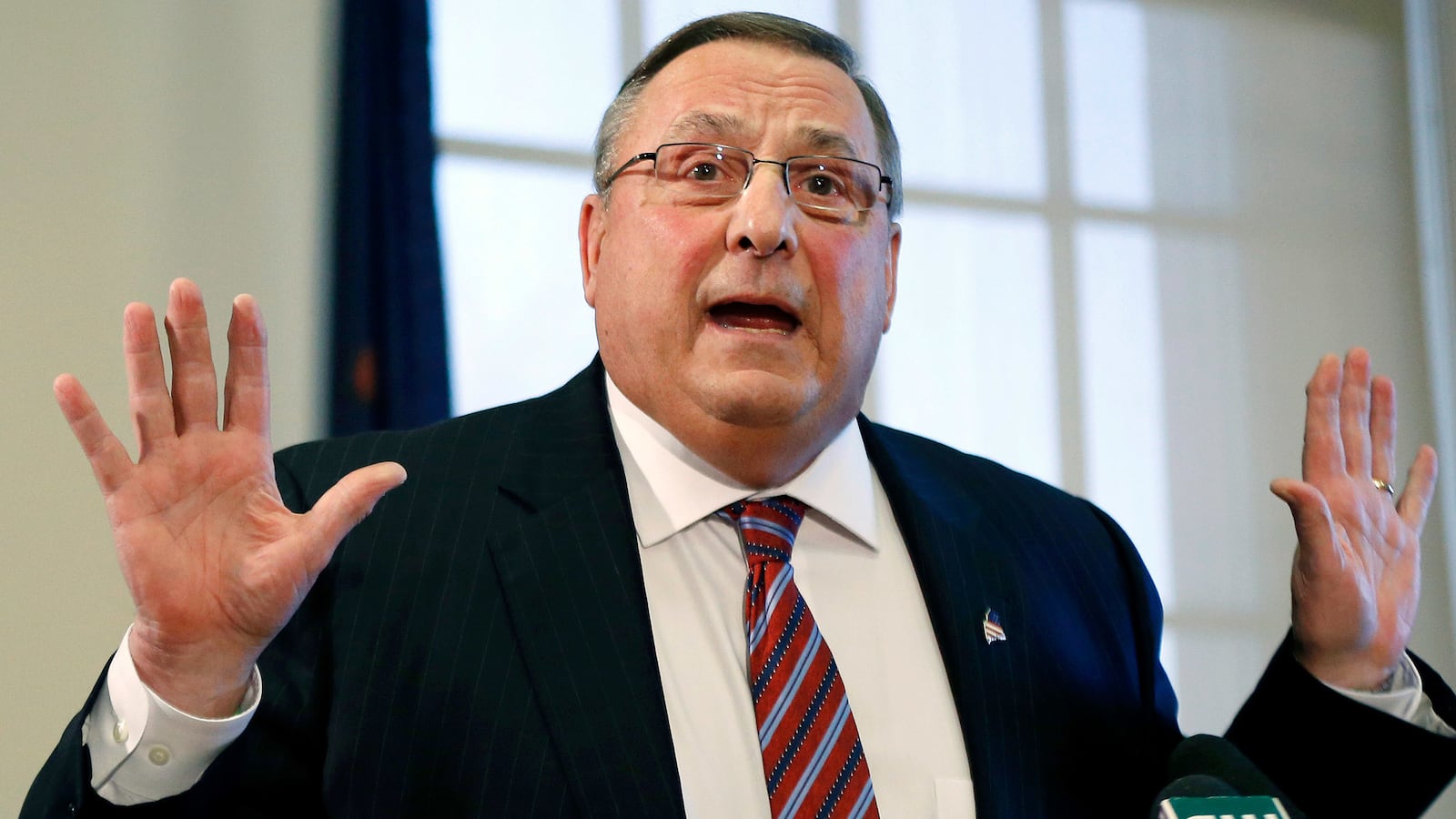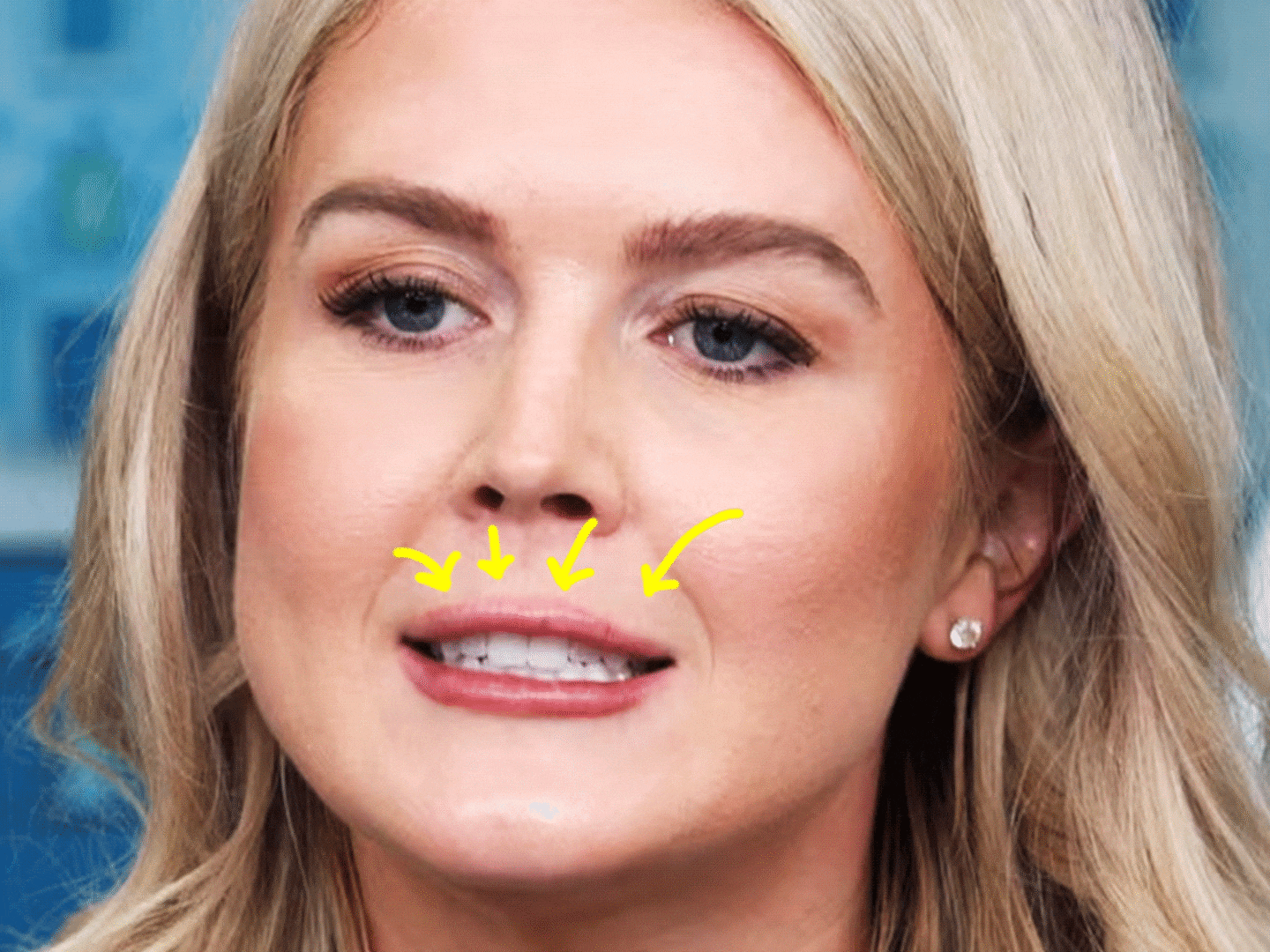Governor Paul LePage, Maine’s miniature Donald Trump, has said over 90 percent of the state’s drug trafficking comes from black and Hispanic dealers. But his own binder full of alleged drug dealers proves him wrong.
“I made the comment that black people are trafficking in our state, now ever since I said that comment I’ve been collecting every single drug dealer who has been arrested in our state,” LePage said during an August town hall meeting that drew widespread condemnation for being racist. “I don’t ask them to come to Maine and sell their poison, but they come and I will tell you that 90-plus percent of those pictures in my book, and it’s a three-ringed binder, are black and Hispanic people from Waterbury, Conn., the Bronx and Brooklyn.”
On Monday, LePage released a digital version of his binder to the public. The 148-page document consists mostly of press clippings and printed-out emails showing mugshots of alleged drug dealers. LePage has scribbled notes like “get photo for my album” and “put in the book” and “like pictures in my binder for historical value” on some of the pages.
But contrary to LePage’s claims, “90 percent” of the alleged dealers do not appear to be black or Hispanic. In fact, most appear to be white.
The scanned mugshots in LePage’s binder are grainy and murky, but of the 92 alleged dealers pictured, more than half appear to be white.
Reached for comment, LePage's office said the governor's reference to "those pictures" implied that he was citing statistics about out-of-state dealers. "The Governor was not stating that 90 percent of all the alleged drug dealers in the binder are black and Hispanic," spokesperson Adrienne Bennet told The Daily Beast. "Clearly, the binder demonstrates that all releases and forwarded news articles sent by Steve McCausland were placed in the binder, which included methamphetamine arrests. The 90 percent underscore was put on alleged heroin traffickers from out-of-state."
LePage has a history of pinning Maine’s drug trade on people of color. In a January town hall, he described the state’s drug dealers as out-of-state men with names like “D-Money” who impregnate “young white girls.”
“These aren’t the people who take drugs. These are guys with the name D-Money, Smoothie, Shifty. These type of guys. They come from Connecticut and New York, they come up here, they sell their heroin, then they go back home,” LePage said in January. “Incidentally, half the time they impregnate a young, white girl before they leave, which is a real sad thing because then we have another issue we’ve got to deal with down the road.”
LePage later defended his remarks, explaining that it was safe to conflate “Maine women” and “white women.”
“I was going impromptu in my brain, didn't catch up to my mouth,” he said two days later. “Instead of saying, ‘Maine women,’ I said, ‘white women.’ I’m not going to apologize to the Maine women for that because if you go to Maine you will see we are essentially 95% white.”
LePage also drew heat in January for appearing to encourage gun owners to shoot drug dealers.
“I tell ya, everybody in Maine, we have constitutional carry,” LePage said. “Load up and get rid of the drug dealers. Because, folks, they’re killing our kids.” Asked whether he was endorsing vigilante justice, LePage said he wasn’t.
LePage, a Donald Trump supporter, continued to suggest shooting drug dealers in August, describing policing as a war against an enemy, which he perceives as people of color.
“You’ve been in uniform?” he asked a fellow Republican legislator during a press conference. “You shoot at the enemy. You try to identify the enemy and the enemy right now, the overwhelming majority of people coming in, are people of color or people of Hispanic origin.”
In light of the demographics in his binder, LePage’s current stance on the extrajudicial killing of drug dealers is unclear.





